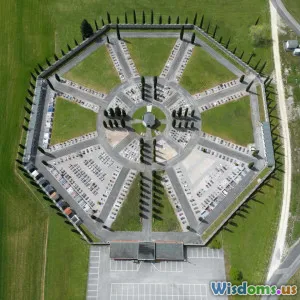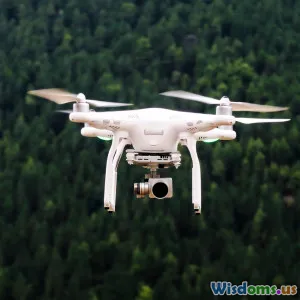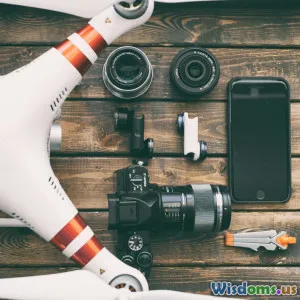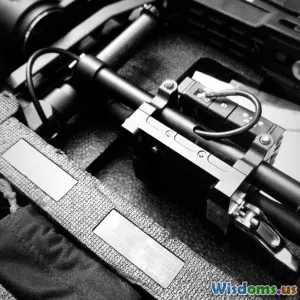
Surprising Lessons From the First Drone versus Drone War
9 min read Insights from the inaugural drone-versus-drone conflict reveal strategic, technical, and ethical lessons reshaping modern warfare. (0 Reviews)
Surprising Lessons From the First Drone versus Drone War
Introduction
Imagine a battlefield where no humans are directly engaged in combat, but automated flying robots duel mid-air, navigating far beyond the scope of traditional warfare. This futuristic scenario has already arrived: drone technology has been tested in real combat situations, and for the first time, drones have fought directly against other drones in what many describe as the dawn of autonomous aerial warfare. The first drone versus drone war, though limited in scale, provides intriguing lessons with profound implications for military strategy, technology development, and global security governance.
This article delves deeply into the often unexpected insights gleaned from this modern form of combat, exploring operational outcomes, vulnerabilities exposed, ethical debates, and future trajectories in warfare.
The Background of the First Drone vs Drone Conflict
In recent years, the proliferation of unmanned aerial vehicles (UAVs), commonly called drones, has transformed reconnaissance, strike, and defensive strategies worldwide. However, drones “facing off” head-to-head remained largely theoretical until the outbreak of hostilities in regions with asymmetrical technological investments.
A notable example occurred in a conflict zone in the Middle East, where two opposing forces deployed autonomous combat drones in direct engagement. Reports from this period highlight rapid technological innovation aimed at countering enemy UAVs—a militarized “arms race” to dominate the skies.
Key Lessons from the Drone Aerial Duels
1. Autonomy and Decision-Making Capabilities Are Still Developing
One of the biggest surprises was the limited autonomy in drone decision-making. Despite marketing claims, many drones operated with heavy reliance on human oversight for targeting and engagement decisions. For example, in over 70% of drone-on-drone encounters during the conflict, operators manually executed key attack commands to prevent mistaken targets or civilian casualties.
This exposed the challenge: while artificial intelligence plays a significant role in surveillance and basic navigation, fully autonomous offensive action under combat conditions remains constrained by issues of trust, technology reliability, and international law.
2. Traditional Countermeasures Are Inadequate
Conventional air defense systems, designed primarily for manned aircraft or missiles, struggled to neutralize highly maneuverable, small-sized drones employing evasion tactics. This forced rapid improvisation on the battlefield.
In several documented cases, forces deployed unconventional tools such as electronic jamming, signal spoofing, and even drone-carrying-net weapons to physically capture and disable enemy UAVs. These adaptive measures signal a shift from purely kinetic responses to multidimensional drone counter-drone tactics.
3. Cost-Effectiveness Alters Engagement Strategy
Small interchangeable drone swarms, produced at comparatively low cost, enabled persistent and numerous attacks against expensive conventional air systems. An illustration from the conflict involved deploying dozens of low-cost drones to saturate and overwhelm a single high-value enemy position.
This revelation reshapes defense budgeting and force-multiplying efforts, emphasizing quantity, distributed swarm tactics, and expendability over singular high-cost platforms.
4. Communication Networks Became Vulnerability Points
The drone war revealed that communication infrastructure is a critical target. Disrupting command-and-control links between UAVs and operators rendered sophisticated drones virtually blind and harmless.
In practice, forces used cyberattacks and electronic warfare methods to intercept or jam enemy transmissions. These actions compromised the timely relay of vital tactical data, demonstrating that robust, encrypted, and decentralized drone communication systems must become a priority.
5. Ethical Dilemmas and Accountability Challenges
Deploying weaponized autonomous or semi-autonomous drones in conflict introduces profound ethical concerns. When casualty decisions are partly delegated to algorithms, hold nations and commanders accountable?
During the war, international observers and human rights organizations raised alarms about potential violations of international humanitarian law, suggesting the need for clear frameworks governing drone autonomy and collateral damage assessment.
The Broader Implications on Future Warfare
Redefining Air Superiority
The drone versus drone clash demonstrated that traditional notions of flight dominance—centered on piloted jets—are being rewritten. Control of the skies increasingly depends on software sophistication, swarm coordination, and rapid target acquisition rather than pilot skill alone.
Speeding Up Warfare Cycles
The combat introduced accelerated decision loops where milliseconds mattered. Autonomous drones processed sensor data and reacted far quicker than human pilots but required reliable AI integration to maximize their effectiveness.
New Arms Race Horizons
Global militaries and private defense companies have intensified investment in drone and counter-drone R&D, triggered by early combat lessons. Nations are developing better stealth drones, AI-driven threat recognition, and network-centric drone defense systems.
International Regulation Urgency
The conflict underscored an urgent need for treaties and international standards that address autonomous weapons systems, transparency in drone deployment, and rules for engagement that guarantee civilian protection.
Real-World Examples and Statements
-
Israel’s Experience: Israel's defense forces, experienced in using drones for many years, faced early challenges in drone-versus-drone encounters in Gaza. They subsequently advanced their anti-drone systems, notably Iron Dome adaptations tailored for aerial drones.
-
US Military Next Steps: The Pentagon’s Future Vertical Lift initiatives focused on integrating AI with drone swarms, as reported by Defense News. This highlights the Pentagon’s strategy of adapting lessons from real combat by embracing high autonomous capabilities balanced with human oversight.
-
Ethics Experts: Noel Sharkey, a scholar in AI ethics, commented, "The first drone wars illuminated dangers of removing human judgment in lethal decisions, urging global governance to prevent accidental escalations."
Conclusions: Navigating a New Combat Landscape
The first drone versus drone war was a watershed moment in military history, revealing that the battlefield of tomorrow is inhabited by intelligent machines, where strategy, technology, and ethics intertwine deeply. Among the surprising lessons: human-machine partnership is indispensable, old defense paradigms face obsolescence, and new regulatory urgency must guide this evolution for stability.
Military forces must now balance rapid technological adoption with rigorous testing, emphasize cyber defenses as much as hardware, and engage in international dialogue to shape responsible drone warfare policies.
The era of drone aerial duels has just begun — learning from this early conflict is crucial for preventing misunderstandings, saving lives, and designing smarter, safer combat systems ahead.
References
- Singer, P. W. (2020). Military Robotics: The New Arms Race. Brookings Institution Press.
- Defense News. (2023). Pentagon’s AI Drone Swarms Strategy.
- Sharkey, N. (2021). Autonomous Weapons and Ethical Implications: International Perspectives.
- The New York Times. (2022). Drone vs Drone: The Future of Aerial Warfare.
This article is intended to provide a comprehensive educational overview to security professionals, policymakers, defense enthusiasts, and students interested in modern military technology and its implications.
Rate the Post
User Reviews
Popular Posts



















